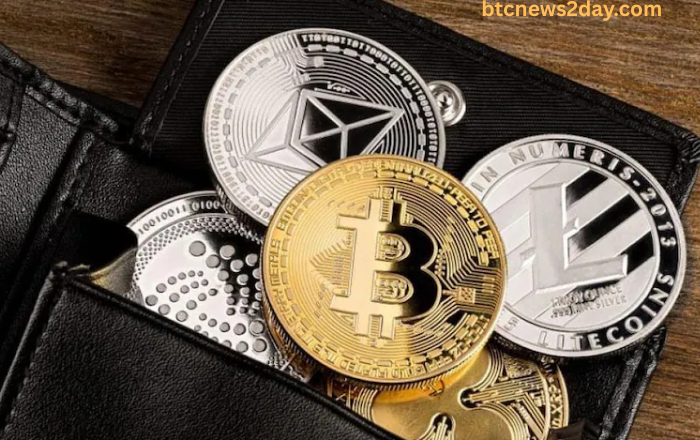As cryptocurrencies gain popularity and value, securing your digital assets is more important than ever. Unlike traditional bank accounts, crypto assets are decentralized meaning you are fully responsible for protecting your holdings. Hackers, scammers, and even simple mistakes can result in the permanent loss of funds. If you’re new to crypto or want to upgrade your security, this guide will walk you through how to store your cryptocurrency safely.
Why Secure Storage Is Essential
Unlike centralized banking systems, cryptocurrency doesn’t offer customer support or recovery options if your funds are lost or stolen. If someone gets access to your private key, they can transfer your crypto instantly and the transaction is irreversible. This is why secure storage is not optional, it’s a must for anyone who owns Crypto News, whether it’s Bitcoin, Ethereum, or any altcoin.
Types of Crypto Wallets
Cryptocurrency is stored in wallets, which are tools that let you interact with the blockchain using private and public keys. There are two main categories:
1. Hot Wallets (Online)
Hot wallets are connected to the internet and are often more convenient for everyday use or quick trading.
Examples:
- Mobile wallets (Trust Wallet, MetaMask)
- Desktop wallets (Exodus, Electrum)
- Web wallets (Blockchain.com, Coinbase Wallet)
Pros:
- Easy to set up and use
- Accessible on multiple devices
- Ideal for small amounts or frequent transactions
Cons:
- Vulnerable to hacking, malware, and phishing attacks
- Security depends heavily on your device’s protection
2. Cold Wallets (Offline)
Cold wallets are not connected to the internet, making them far more secure from cyber threats.
Examples:
- Hardware wallets (Ledger Nano S/X, Trezor)
- Paper wallets (printed private/public keys)
- Air-gapped devices (completely offline computers)
Pros:
- Immune to online hacks
- Best for long-term storage and large amounts
Cons:
- Less convenient for frequent access
- Higher upfront cost (especially hardware wallets)
- Can be lost or damaged if not backed up properly
Best Practices for Storing Crypto Securely
Whether you use a hot or cold wallet or both these best practices will help you avoid common risks.
1. Use Strong Passwords
Use complex, unique passwords for all your crypto accounts and wallets. Avoid reusing passwords or using personal information.
Tip: Use a trusted password manager like Bitwarden or 1Password to store your passwords securely.
2. Enable Two-Factor Authentication (2FA)
Always activate 2FA on exchanges, wallet apps, and email accounts linked to crypto. Use apps like Google Authenticator or Authy instead of SMS-based 2FA, which is vulnerable to SIM swap attacks.
3. Back Up Your Wallet and Seed Phrase
When setting up a crypto wallet, you’ll receive a recovery phrase (also called a seed phrase) typically 12 to 24 words. This is your lifeline if you lose access to your device or wallet.
Important:
- Write it down on paper and store it in a secure location.
- Never save it on your phone, computer, or cloud storage.
- Never share it with anyone.
4. Keep Software Updated
Whether you’re using a wallet app, browser extension, or hardware wallet interface, keeping software up to date is critical to fixing bugs and patching security vulnerabilities.
5. Avoid Phishing Attacks
Phishing scams trick you into giving up sensitive information. These may come as fake emails, ads, or websites that mimic real platforms.
Always:
- Double check URLs
- Avoid clicking suspicious links
- Bookmark official sites
- Verify social media accounts or customer support channels
6. Use Cold Storage for Long-Term Holdings
If you’re planning to hold (HODL) crypto for months or years, a hardware wallet is one of the safest options.
- Store the hardware wallet in a secure physical location (like a safe).
- Keep multiple backups of your seed phrase in different places.
- Avoid sharing or showing your device to others.
Bonus Tip: Split Your Storage
Many experienced users split their funds between different wallets:
- Hot Wallet: Small balance for regular transactions
- Cold Wallet: Main balance for long-term holding
- Exchange Wallet: Only when actively trading
This approach reduces risk by diversifying your exposure.
What to Avoid
- Never store large amounts on exchanges
- Avoid using public Wi-Fi to access wallets or exchanges
- Don’t store seed phrases digitally or take screenshots
- Never trust “free giveaways” or people asking for your private keys
Final Thoughts
The world of cryptocurrency offers freedom and financial control, but it comes with responsibility. Learning how to store your cryptocurrency securely is one of the most important steps any investor or trader can take.By choosing the right wallet, using strong security practices, and staying alert to threats, you can confidently hold and manage your crypto assets.
